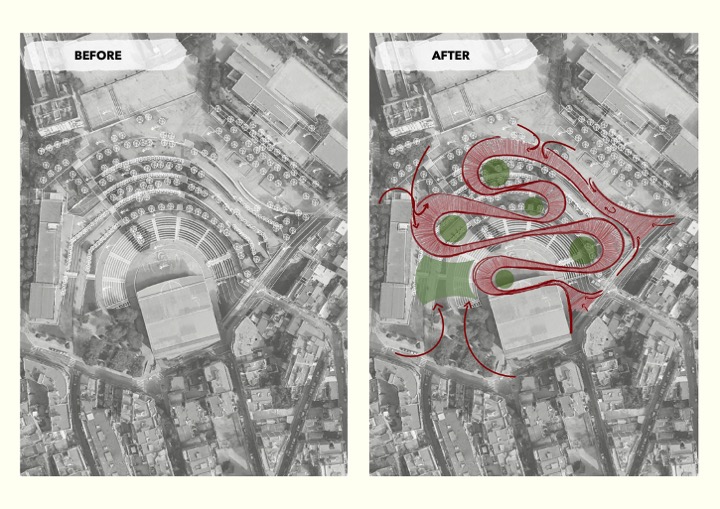What can it look like to design spaces with empathy?
In late October, our class had the opportunity to visit Parc del Pins in Santa Coloma de Gramenet to reimagine its public space during a one-week workshop. We spoke with members of the municipality, who generously offered their time and perspective on how Santa Coloma de Gramenet is changing and growing. Santa Coloma de Gramenet, located on the outskirts of Barcelona, is a densely populated urban area. While parks like Parc del Pins serve as important green lungs for the community, they often navigate challenges like underutilization and poor accessibility.
The area presents an opportunity for enhancement, aiming to reconnect residents with nature and reimagine the park into a more vibrant, multifunctional public space that meets the social and environmental needs of Santa Coloma’s growing population and changing landscape.
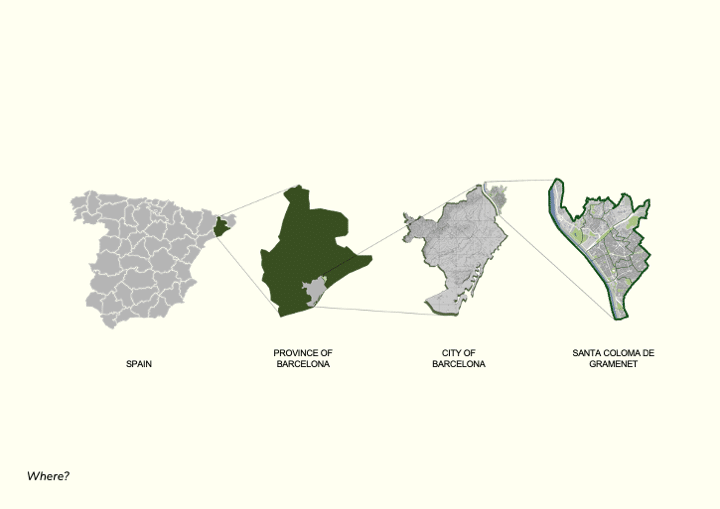
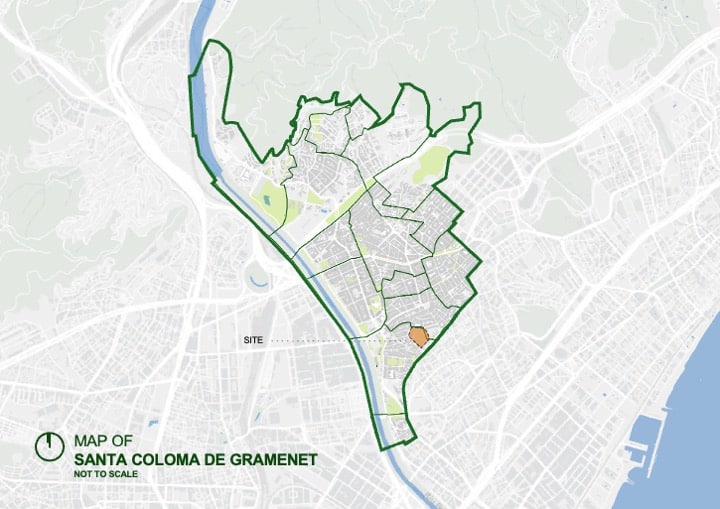
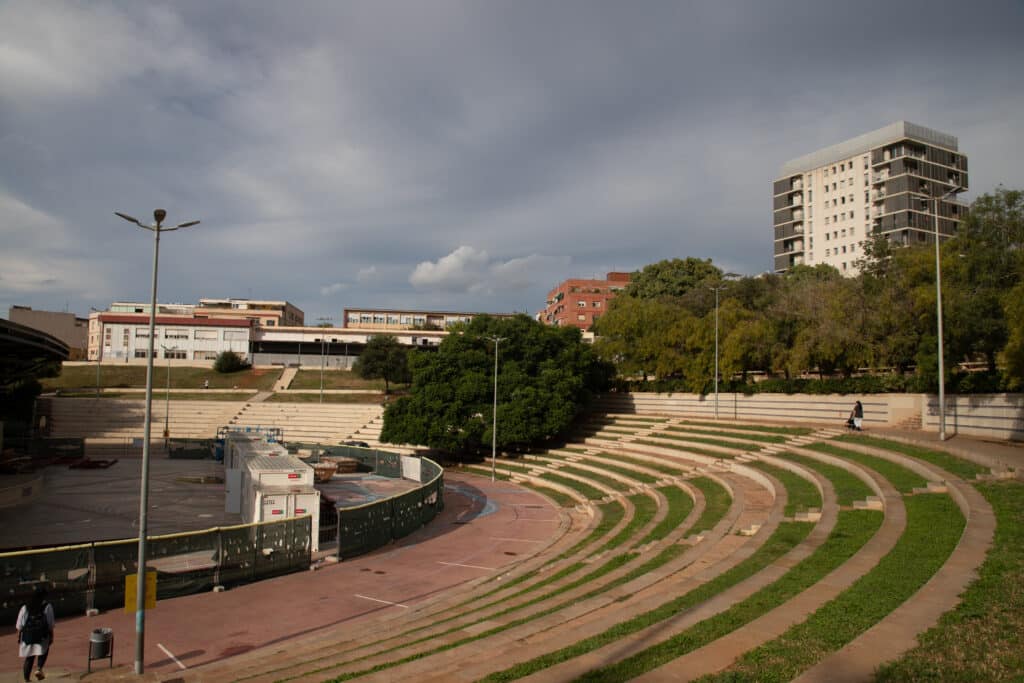
What really brought our analysis to life was spending time on site following our conversations with the municipality where we engaged with people using the space. We noticed people across generations enjoying the outdoor space. We spoke with one elderly woman sitting with a group of friends who shared that she and her friends meet in the park to people watch. Our conversation with her and her friends captured something essential about what the park already offers: a space to gather and socialize, especially for elderly communities.
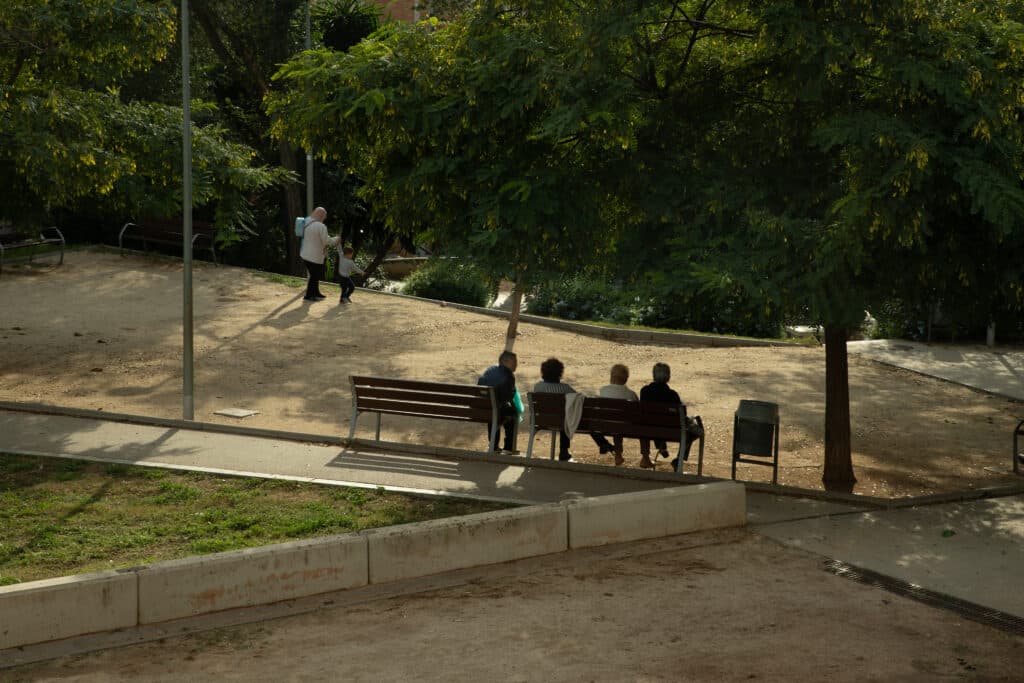
Our team began by analyzing contemporary geographic patterns of the area. We mapped out Santa Coloma de Gramenet’s district structure to understand how Parc del Pins sits within the larger urban context. Understanding this layout helped us see how residents from different neighborhoods might access and use the park.
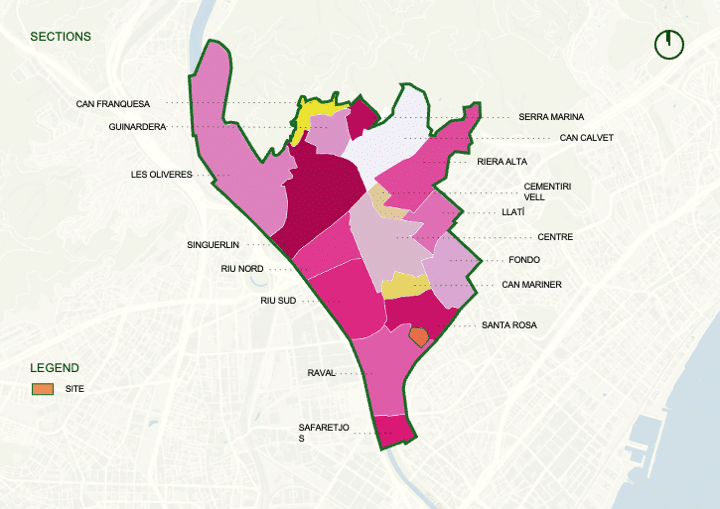
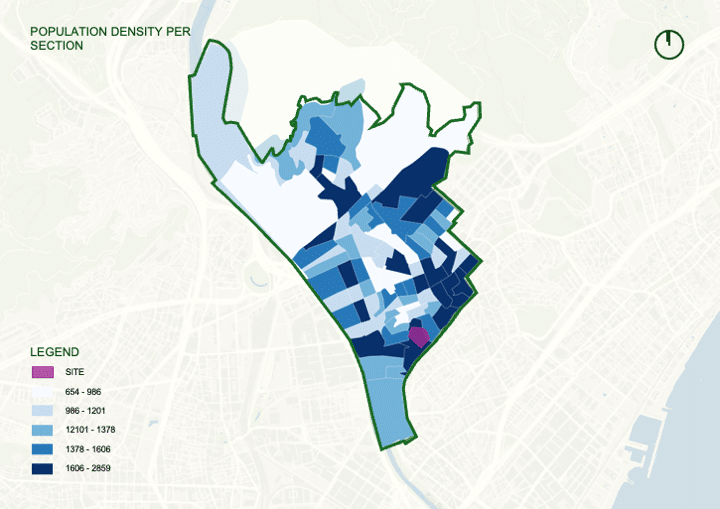

We were tasked to focus on one demographic group when reimagining the park. When we dove into the demographic analysis, we found that the largest age groups were between ages 40-49. Considering birth rates and increasing life expectancy, we predicted that elderly people will represent the largest portion of the population in the next 30 years. This demographic shift makes designing for ageing needs and elderly populations not just relevant for today, but essential for the park and municipality’s future.
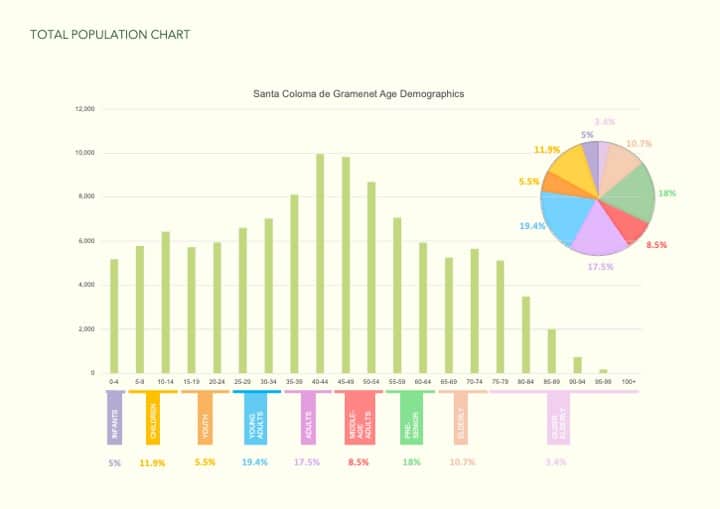
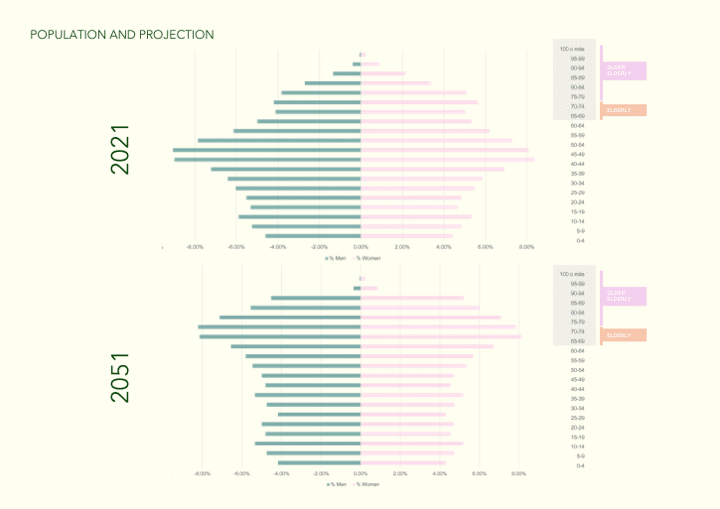
From this foundation of research, the maps, the site visit, the conversations, our design principles began to emerge. We looked to previous project examples to steer our planning and design principles.
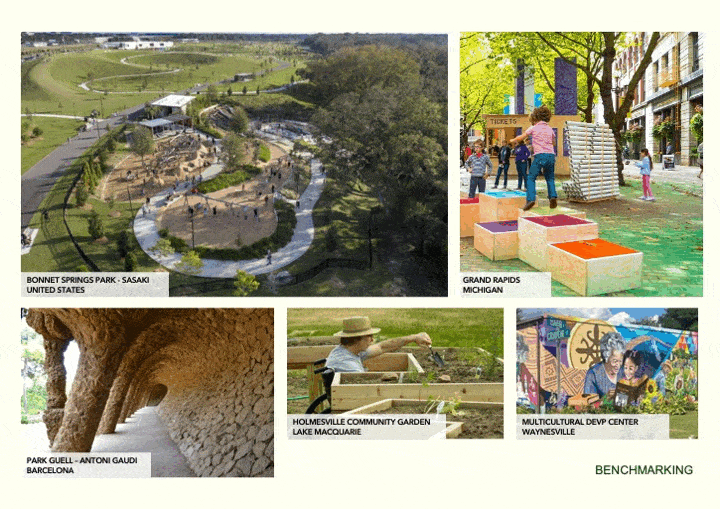
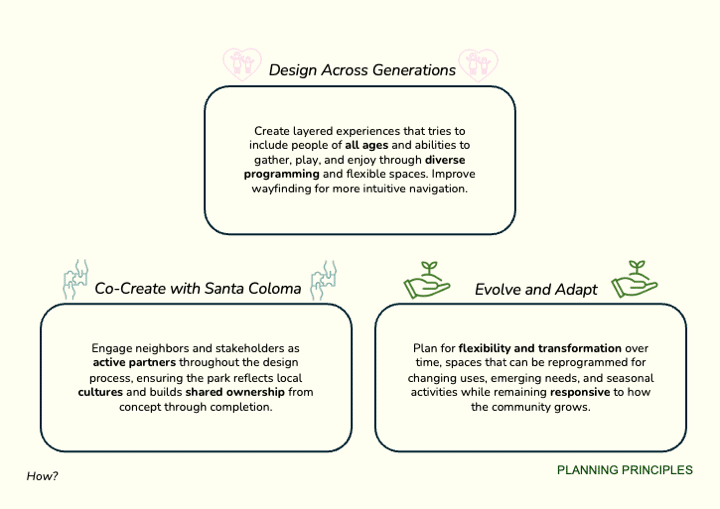
We envision reimagining the routes to follow a more accessible curve shapes that connects the social and educational spaces on the exteriors of the park. Around Parc del Pins, there are important educational and social spaces, such as schools (e.g., Escola Antoni Gaudí, Casal dels Infants) and community spaces (e.g., Centre Cívic Els Pins), which the curved pathways would aim to enhance connections to the park. The route also establishes vital connections to the emerging intergenerational housing sites planned for the adjacent streets, creating more pedestrian links that encourage daily interaction between residents of different ages and the park’s ecosystem services.
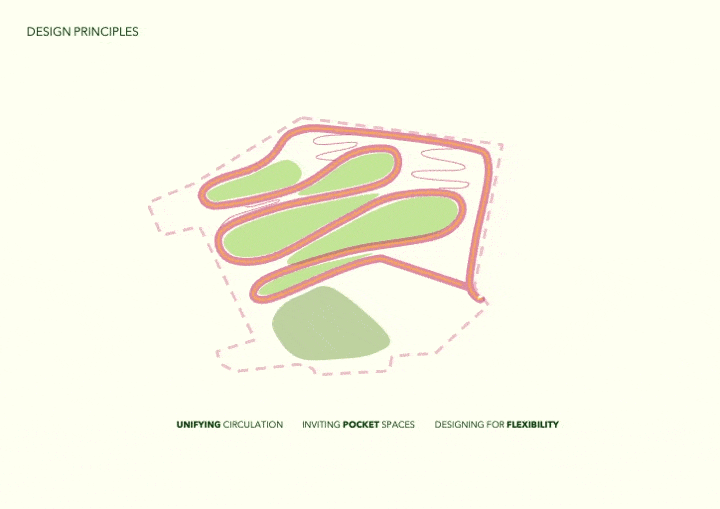
The pockets of space in between the curved pathways allow for more flexible programming, such as jungle gyms, playgrounds, stage, and a community garden that can adapt throughout time to the needs and interests of the community. In the end, although our original focused demographic was the elderly, we realized that designing for the elderly is designing with empathy. This approach designs for more bodies in mind, for more inclusion, for connecting pathways from grandparents to grandkids at the schools, and for a public space to foster more community and connection.
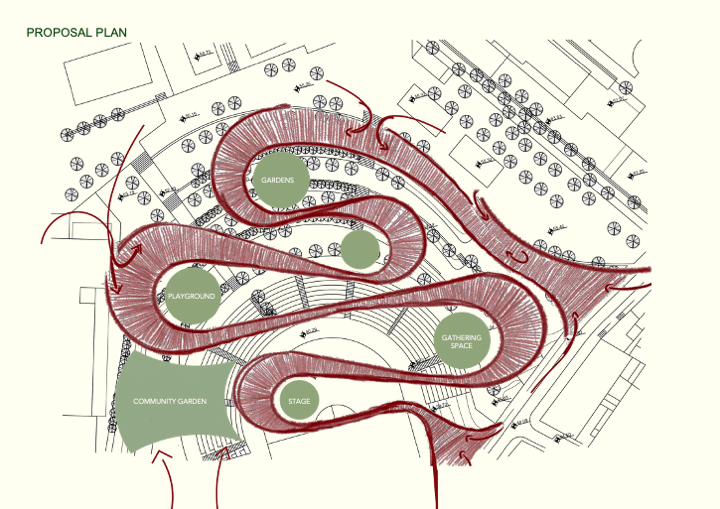
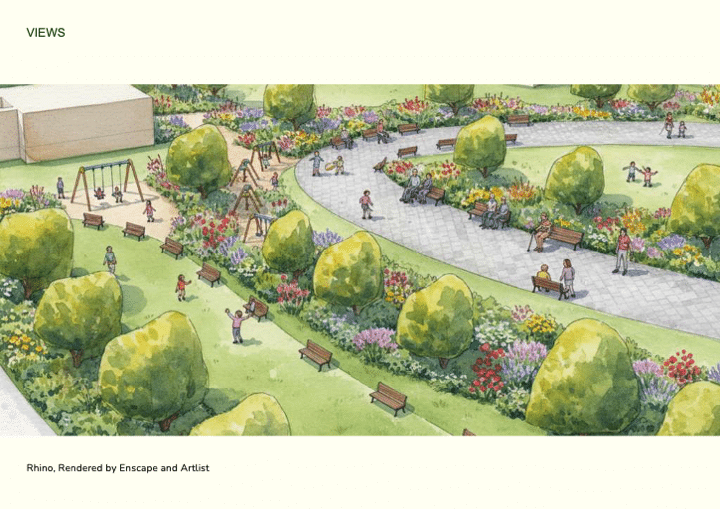
We began mapping out a potential implementation timelines and strategies, being mindful of seasonal uses of the park. Designs often best reflect the needs of the communities when they intentionally engage communities in more inclusive and representative ways. We wanted to prioritize community engagement throughout the stages of the project, such as engaging elderly communities in senior centers like Centre de Dia Marina and holding open design feedback sessions in the park.
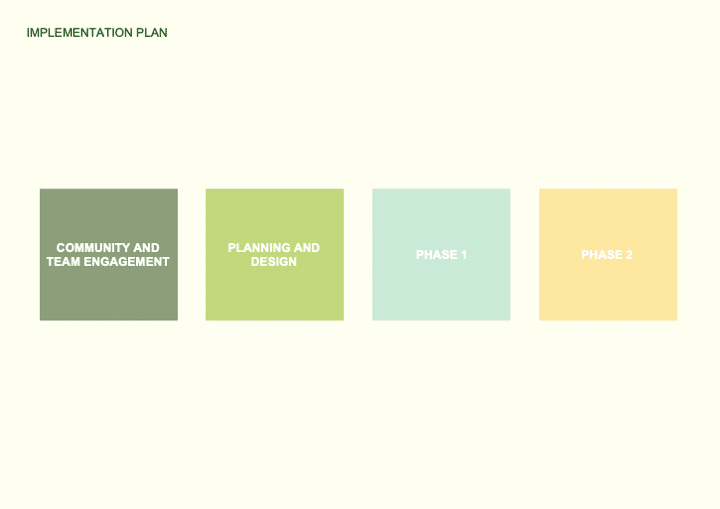
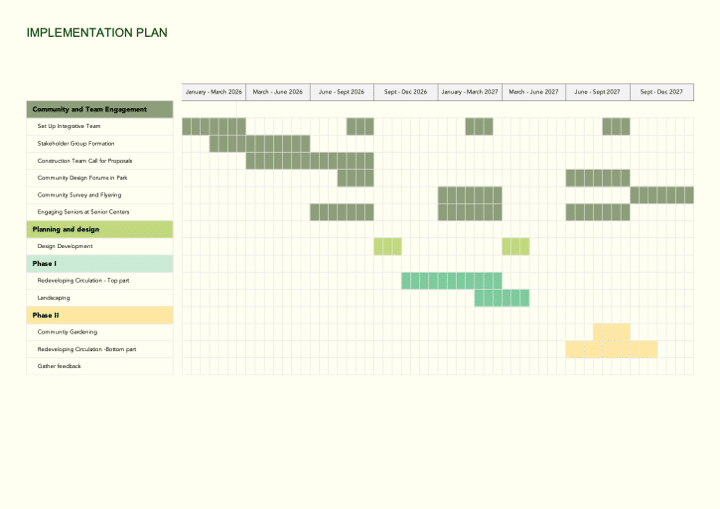
We realized that to design spaces for elderly communities is to design spaces with empathy: where the park becomes not just a green space, but a social infrastructure that knits generations together.
